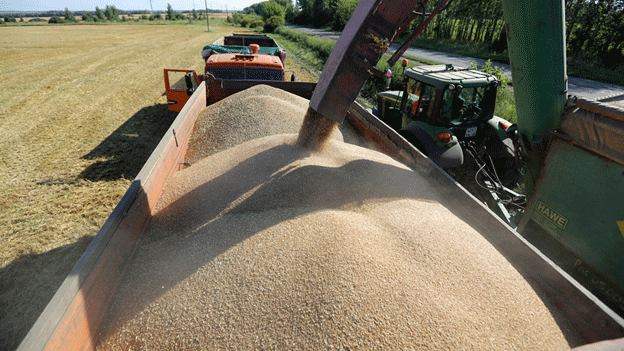In a move to regulate grain exports, the Russian Ministry of Agriculture has announced an increase in the export duties for wheat, barley, and corn. Effective from November 7 to 12, the export duty for wheat will rise to 2,517 rubles per ton, up from 2,272.9 rubles. The duty on barley will increase to 1,266.2 rubles per ton, while corn will see a rise to 3,059.9 rubles, from 2,702.1 rubles. These changes reflect the current market conditions, with wheat’s export duty calculated based on an indicative price of $222.5 per ton, barley at $192.5, and corn at $218.9.
These adjustments come amidst a notable increase in Russian grain exports in 2024. According to data from Rosselkhoznadzor, from January to August, Russia exported 57.96 million tons of grain and its products, a 7% increase over the same period in the previous year. Wheat accounted for the largest portion, with 37.1 million tons exported, followed by 6.1 million tons of barley and 5.2 million tons of corn. This increase is largely attributed to favorable weather conditions and government support for the agricultural sector.
Government’s Stance: Protecting Domestic Interests
The decision to raise export duties aligns with the Russian government’s strategy of safeguarding its domestic market and ensuring adequate food supply. Deputy Prime Minister Victoria Abramchenko, in January 2024, stated that the government had no plans to remove export duties, emphasizing that the priority was to increase grain purchases for the state intervention fund. This strategy aims to secure domestic supplies before focusing on export expansion, which is crucial for maintaining stable food prices and addressing the growing demand from the food and livestock sectors.
This export duty increase is a protective measure to balance Russia’s rising grain exports with its internal needs. By controlling the amount of grain leaving the country, the government ensures sufficient reserves for domestic consumption, preventing any potential shortages or sharp price hikes in the local market.
What This Means for Farmers and Exporters
For Russian farmers, this duty increase could have both positive and negative impacts. While the higher export duties may reduce the global competitiveness of Russian wheat and other grains, thus making them less attractive to foreign buyers, the focus on internal market stability could result in more predictable local prices. This can help farmers avoid the volatility seen in global markets, ensuring steady demand for their produce.
On the flip side, exporters might feel the impact more directly. The increased duties could lead to reduced profit margins, as the higher cost of exporting grains may make Russian supplies less competitive in international markets. However, the consistent demand for Russian grain in countries like Egypt, Turkey, and those in the Middle East and Africa could mitigate these effects to some extent.
The increase in Russia’s export duties on wheat, barley, and corn reflects a careful balancing act between maintaining domestic food security and capitalizing on the growing export potential of the country’s grain sector. While the rise in export duties may pose challenges for farmers and exporters, the government’s priority remains to ensure that Russia’s internal market remains stable and self-sufficient. As global grain prices continue to fluctuate, this strategic decision will likely help Russia maintain its role as a leading global grain exporter while securing its domestic needs.
Error





